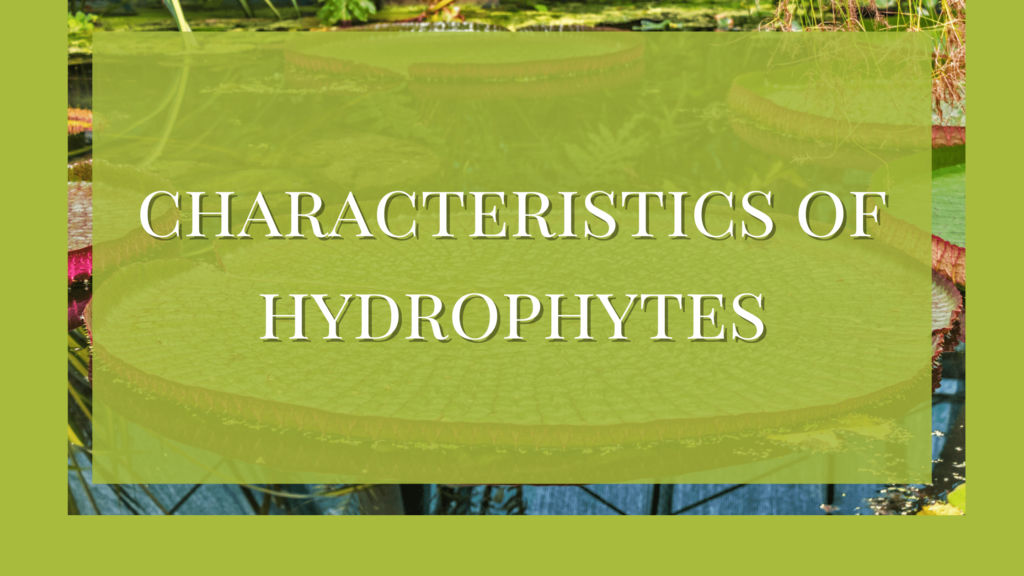Ecologists have come up with 5 different theories of succession regarding the plant succession process.
The end product of ecological succession after seral communities is the climax or a stable community. It is generally believed that once the climax is attained, the community does not change at all. In other words, when a community attains stability and is irreplaceable by another, it is called a climax community.
This community will be at equilibrium with its environment to form a steady state for community function and structure. But on the margins of the climax community, another stable community may develop. This condition is called proclimax, which can easily change in appearance and distribution.
Sometimes a strip of vegetation of higher life forms is found within a climax and such higher type of vegetation is called post-climax or disclimax. For example, a forest along a stream in a grassland constitutes a post-climax.
The climax of a localized region or margins is called sub-climax or pre-climax, if the plants there are of a lower order than the climax.
The pro-climax, post-climax, pre-climax, etc, are used to propose various theories of plant succession.
Theories of Succession
Ecologists propose several theories of succession but the predominant theories about climax communities are
- Monoclimax theory
- Polyclimax theory
- Polyclimatic climax theory
- Climax-pattern theory
- Site Climax theory
1. Monoclimax Theory
Frederick Clements, an American plant ecologist was the founder of monoclimax theory. According to this theory, in a climatic region or a geographical area, other communities present in the area, in addition to the climax community, are regarded as subordinate communities.
It means, there is only one climax which is determined by the climate, irrespective of the environmental conditions it started with. The climax will be a direct depiction of its climate. This theory led to the identification of different stable communities that are different from their regional climatic climax.
Frederick Clements used the terms disclimax, pre-climax, post-climax, sub-climax, and sericlimax to define the subordinate communities.
2. Polyclimax Theory
Proposed by Tansley, the polyclimax theory suggests that there are several vegetational climaxes in a region that are controlled by factors such as edaphic factors, topography, fire, animal activity, etc. This is known as the edaphic climax, fire climax, regional climax, etc.
- Regional climate climax is determined by the climate of the region.
- The edaphic climax is determined by soil conditions and the topography of the region.
- Fire climax is caused by frequent fires.

3. Poly Climatic Climax Theory
In 1933 Tuxen proposed this polyclimatic climax theory. Later Tuxen and Diemont in 1937 and Ellenburg in 1959 developed this theory. According to this theory, a macroclimatic region will have more than one climatic climax. The main cause of this is the different types of soil.
Mueller-Dombois and Ellenburg elaborated on this in 1974 by stating that no two mature soils resulting from different parent materials will ever merge. This inability to merge is reflected by the climax vegetation growing on them. The climax plant community of these soils will not merge either.
The main drawback of this theory was that vegetation could not be considered a climax community unless it is growing in a stable mature soil. Because the soil stability and geomorphology are essential for the climax community.
4. Climax pattern theory
In 1951 Whittaker proposed the climax pattern theory. Later Macintosh and Sellack elaborated on this theory which says that the species structure, composition, and balance of a climax community is controlled by its ecosystem and is not dependent on a single factor. Due to this, the pattern of the climax community changes with the changes in the ecosystem.
Because of these changes, the prevailing climatic climax community is the one that expresses the overall climate of the area. In a way, the climax community reflects the environment gradient with varying diversity as per the pattern of the environment and its population.
Due to this interrelationship, any change in the population or environment will affect the climax community. Thus, there is no absolute climax in any area and that climax is relative to the various factors involved.
A natural community adapts to environmental factors such as edaphic factors, wind, fire, biotic factors, etc. So there is a continuity of climax types.
5. Site Climax Theory
In 1959, Dyksterhuis proposed that a relatively stable community be considered the climax if it grows in zonal or interzonal areas affected by manmade erosion. Such soil can be considered mature soil and the vegetation growing here could be in equilibrium and thus a climax community. Here, climax vegetation is synonymous with the edaphic, climatic, or physiographic climaxes.
Since this theory does not consider geomorphological equilibrium, the site climax theory resembles the climax pattern theory. At the same time, site climax theory has a continuous approach, and the climax pattern theory adopts a discontinuous approach.
Conclusion
Only two of these five theories- climax pattern and site climax theories are compatible with the modern needs of studying vegetation. Since they do not need a steady mature soil for the climax community to be at equilibrium, they are the best options. For the management of climax communities, the best option to consider is the site climax theory, which is also prevalent in many countries.
References
- Meeker Jr, O., & Merkel, L. (n.d.). Climax Theories and a Recommendation for Vegetation Classification-A Viewpoint, Journal Of Range Management 37(5), September 1984.
- ECOLOGICAL SUCCESSION
- Shukla, R.S. and Chandel, P.S. (2001) Plant Ecology. S. Chand and Company Ltd., New Delhi.
- Verma, P.S., Agarwal, V.K. (1999). Cell biology genetics molecular biology evolution and ecology. New Delhi: S.Chand Co.(Pvt) Ltd.




